First report on the genetic diversity, connectivity and structure of the H. scabra sea cucumber using high-resolution genomic data
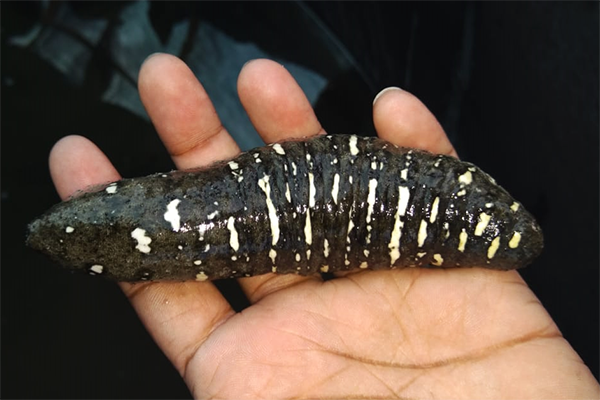
The sandfish, Holothuria (Metriatyla) scabra, is a high-value tropical sea cucumber central to the global bêche-de-mer (BDM) trade. National sea cucumber fisheries in the western Pacific have historically supported the greatest numbers of BDM exports, with volumes of 10,963, 8,719 and 6,081 tons recorded from Papua New Guinea (PNG), Fiji and the Solomon Islands, respectively.
Unsurprisingly, the high fishing pressure experienced by stocks in the region has led to overfishing and fishery collapses for several species. Today, many sea cucumber fisheries in the Pacific remain heavily exploited. These depleted stocks, with largely ineffective fishery management and inadequate regulatory measures, require immediate intervention to arrest stock collapses and permit recovery.
Fiji’s sea cucumber fishery requires additional regulatory measures to arrest declining wild stocks, with strict implementation and enforcement of quotas and collection size limits. These efforts could be reinforced by aquaculture and restocking efforts, to assist the recovery of wild populations. While previous research efforts have generated population demographic data on several commercially important sea cucumber species, which can be used for the development of minimum capture size guidelines and fishery quotas, population genetic assessments remain lacking.
The integration of genetic data into sea cucumber stock assessments provides unique insights into stock health, including the amount of genetic diversity present in populations, the level of replenishment through gene flow from neighboring stocks, as well as the presence of any local adaptation. Genetic information can also directly inform aquaculture and restocking efforts involving H. scabra or other heavily depleted taxa, by identifying potential bottlenecks in the hatchery process where valuable genetic diversity is lost, ensuring that genetically diverse individuals are restocked in overfished areas.
This article – summarized from the original publication (Brown, K.T. et al. 2022. Saving the sea cucumbers: Using population genomic tools to inform fishery and conservation management of the Fijian sandfish Holothuria (Metriatyla) scabra) – reports on a study that carried out a high-resolution genomic audit of wild Fijian sandfish using a robust technique called genotyping-by-sequencing approach (DArTseq). Insights from genomic data were combined with an independent oceanographic particle dispersal model to elucidate the genetic diversity, structure, connectivity, signatures of selection and relatedness of Fijian sandfish. Data generated will inform conservation efforts, wild stock management and hatchery-based restocking interventions for this valuable invertebrate.
Study setup
Adult H. scabra were sampled from natural populations at six locations throughout Fiji. Tissue samples from each individual were collected non-destructively by removing a strip of skin from the ventrolateral anterior flanks of specimens. Tissues were preserved and maintained under refrigeration until DNA extraction at the School of Agriculture, Geography, Environment, Ocean and Natural Sciences (SAGEONS), The University of the South Pacific in Suva, Fiji.
For detailed information on the sampling, locations and data collection; genotyping by sequencing; assessment of genomic diversity and population differentiation; and other analyses, refer to the original publication.
Sea cucumber project redefining traditional farming in Madagascar
Results and discussion
We report for the first time a high-resolution, country-wide genetic audit of wild sandfish populations in Fiji and identify patterns of genetic structure, connectivity, diversity and relatedness. These data will be instrumental for informing fishery management of wild sandfish in Fiji and will also direct conservation and restocking efforts for depleted populations.
Given the history of heavy exploitation of sandfish and other sea cucumbers in Fiji and more broadly the south Pacific region, insights gained through this study may be applied to other taxa and in other locations for sustainable exploitation of this valuable but still poorly understood resource.
Genetic structure, connectivity and gene flow
Three genetically distinct populations were identified for sandfish sampled from six locations in Fiji, with Lakeba Island (Lau archipelago) in the East, Macuata in the North, and the remaining individuals from Yasawa, Ra, Serua Island and Kadavu constituting the final group. These data suggest an isolation-by-distance model of dispersal operating in Fiji with population fragmentation occurring towards the east. Similar partitioning of genetic variance to within individuals rather than populations was detected by other researchers for northern Australian and Papua New Guinean sandfish.
Our current study is the first to apply the technique of genome-wide SNPs (single nucleotide polymorphisms, frequently called SNPs and pronounced “snips,” are the most common type of genetic variation in organisms) to perform a high-resolution genetic audit of wild populations. From data presented here and with insights from the previous studies by other researchers, it is evident that detectable genetic structure is commonplace in wild sandfish, governed by the extent of gene flow connecting populations and the availability of suitable habitat. These findings differ from studies of other broadcast spawning benthic invertebrates such as pearl oysters and spiny lobsters, where greater levels of panmixia are observed.
A further factor compounding divergence and population fragmentation in sandfish specifically relates to the species’ life history, as development occurs through a highly dispersive planktonic larval stage, before requiring initial settlement on seagrass leaves with later migration to sand substrates. This two-phase settlement process likely has a strong influence on the colonization success of remote and/or new regions, as successful recruitment is reliant on the presence of seagrass.
Genomic diversity and relatedness
The natural distribution of H. scabra is extensive within the tropical Indo-Pacific, however, in the Pacific basin, Fiji represents the easternmost extent of its range. This positions Fijian populations at the periphery of the known natural distribution, away from core populations in the coral triangle region, encompassing Indonesia, Malaysia, the Philippines, Papua New Guinea and the Solomon Islands.
Higher levels of genetic diversity within core relative to peripheral populations are expected, as the availability of suitable habitat is higher, population sizes are larger and stronger connectivity between populations is maintained. Distribution of genomic diversity varied between sampling locations in Fiji, with smaller effective population sizes and lower diversity observed in the more isolated populations towards the east of the country, e.g., the islands of Kadavu and Lakeba, consistent with predictions. These data suggest the presence of a diversity gradient from east to west, concordant with observations of genetic structure and pattern of gene flow.
Implications for fishery and restocking management in Fiji
The wild sea cucumber resource in Fiji has been assessed using traditional fishery census-based methods in several studies, and all suggest species richness and densities at most sites surveyed are among the lowest recorded compared to reference densities for healthy stocks in the Pacific region. A total of 27 species of sea cucumber are present in Fiji, of which 20 species (including H. scabra) are exploited in the commercial bêche-de-mer trade. The most recent stock assessment effort reported that as stocks of high-value and shallow water species such as H. scabra are depleted, fishing effort has shifted towards low and medium-value species such as H. atra.
For H. scabra, it is evident that current fishery management measures have been ineffective at maintaining healthy populations. In 2018, the Fijian government banned the export of all sea cucumber species due to declining populations from mainly visual census surveys. The weak enforcement of the H. scabra ban, as well as unregulated harvest using highly extractive fishing techniques (e.g., underwater breathing apparatus and free diving with “bombs” to access deep-water refuges) can be attributed to stock declines. Unfortunately, the current outlook on the exploitation of all sea cucumber species in Fiji remains bleak.
Despite the status of the wild sandfish resource in Fiji, data generated by the current study can be used by the Fijian government to formulate national fisheries management plans specifically for this species to permit conservation and recovery of depleted populations. We recommend that special attention be paid to peripheral populations, with dedicated harvesting management or harvesting bans and monitoring efforts to ensure recovery.
It is evident that the translocation of individuals (for aquaculture or restocking efforts) from Lakeba Island to elsewhere in Fiji should not be permitted, given signatures of local adaptation. Further research on sandfish populations in other areas of Fiji is required to gain a comprehensive understanding of the resource, however, the successful use of genome-wide genotyping applied to H. scabra here can be replicated for other sea cucumber species, to gain insights into the status of the multi-species Fijian sea cucumber fishery as a whole.
Restocking efforts
Artificial propagation of juvenile sandfish in hatchery systems offers great promise for potential restoration and recovery of depleted and/or extirpated populations; however, great care must be taken when selecting broodstock from source populations and the release of hatchery-produced juveniles. It is important that hatchery-based restocking programs ensure adequate levels of genetic diversity are maintained in juveniles and that restocking sites overlap with the natural dispersal limits of the source population.
It is imperative that sandfish produced in hatchery systems for restocking are released in close proximity to broodstock source locations, to avoid any “genetic pollution” effects arising from the introduction of potentially less diverse individuals into a natural population, or translocation of individuals into a location where natural dispersal regimes may not usually operate.
Within the Fiji context, this particularly applies to individuals from Lakeba Island, where any hatchery-based restocking efforts will need to utilize locally sourced broodstock with subsequent release of juveniles in the vicinity of the source location. However, this presents a risk of increasing consanguinity, which may be avoided to an extent by careful genetic selection of broodstock, or controlled reproduction utilizing a neighboring population (e.g., from elsewhere in the Lau archipelago) for introduction of new alleles.
Perspectives
This study reports on the genetic diversity, connectivity and structure of Fijian H. scabra using high-resolution genomic data for the first time. It presents directions for the development of fishery management policy for management of both the wild sandfish resource and informs restocking efforts to replenish depleted populations. The successful use of the DArTseq platform in this study has the potential to be applied to other sea cucumber species in Fiji, and in other regions involved in the global bêche-de-mer trade.
While this study has offered preliminary insights into the genetic structure and connectivity of sandfish in Fiji, further local, regional and distribution-wide investigations are required to better understand how populations are organized.
Now that you've reached the end of the article ...
… please consider supporting GSA’s mission to advance responsible seafood practices through education, advocacy and third-party assurances. The Advocate aims to document the evolution of responsible seafood practices and share the expansive knowledge of our vast network of contributors.
By becoming a Global Seafood Alliance member, you’re ensuring that all of the pre-competitive work we do through member benefits, resources and events can continue. Individual membership costs just $50 a year.
Not a GSA member? Join us.
Author
-
Kelly T. Brown
Corresponding author
Discipline of Marine Studies, School of Agriculture, Geography, Environment, Ocean and Natural Sciences, The University of the South Pacific, Suva, Fiji[32,106,102,46,99,97,46,112,115,117,64,110,119,111,114,98,46,121,108,108,101,107]
Related Posts
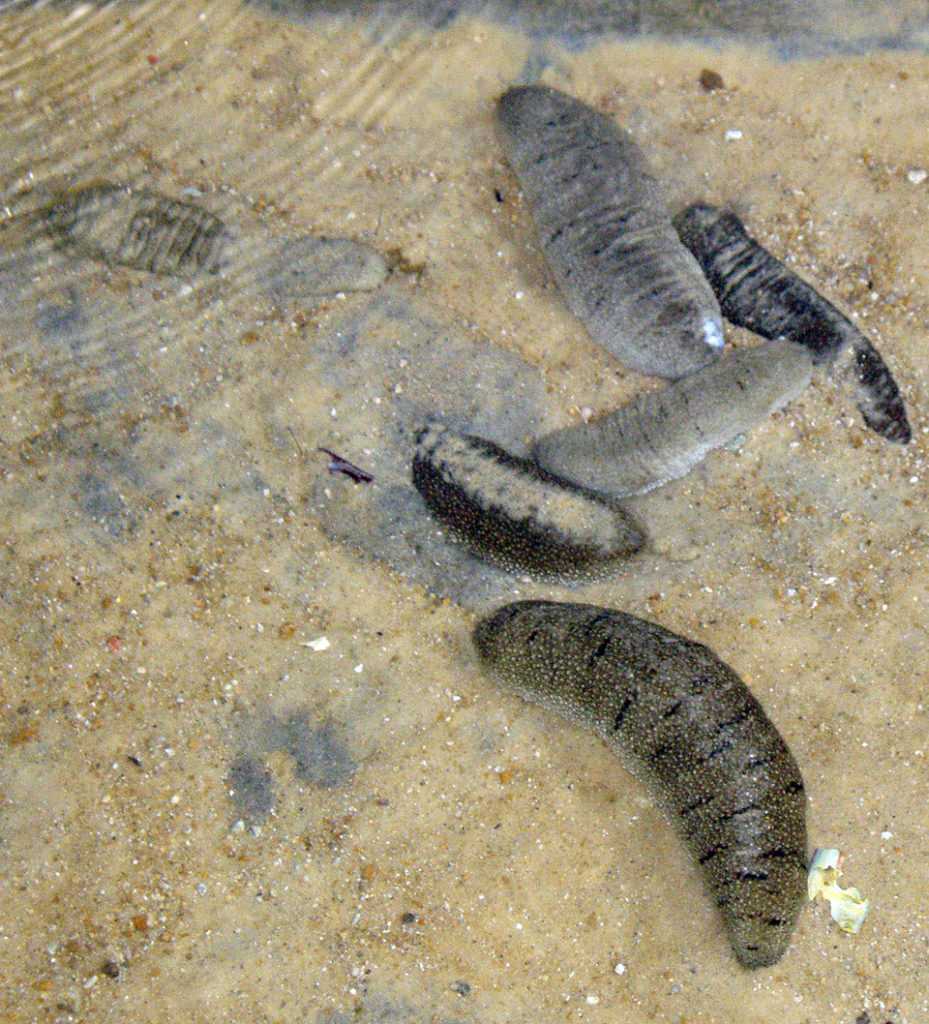
Health & Welfare
Sandfish, profitable sea cucumbers, also supply bioremediation
Sandfish, a high-value sea cucumber, supports the aquaculture of other fish species by cleaning up waste on the bottoms of ponds or sea cages.
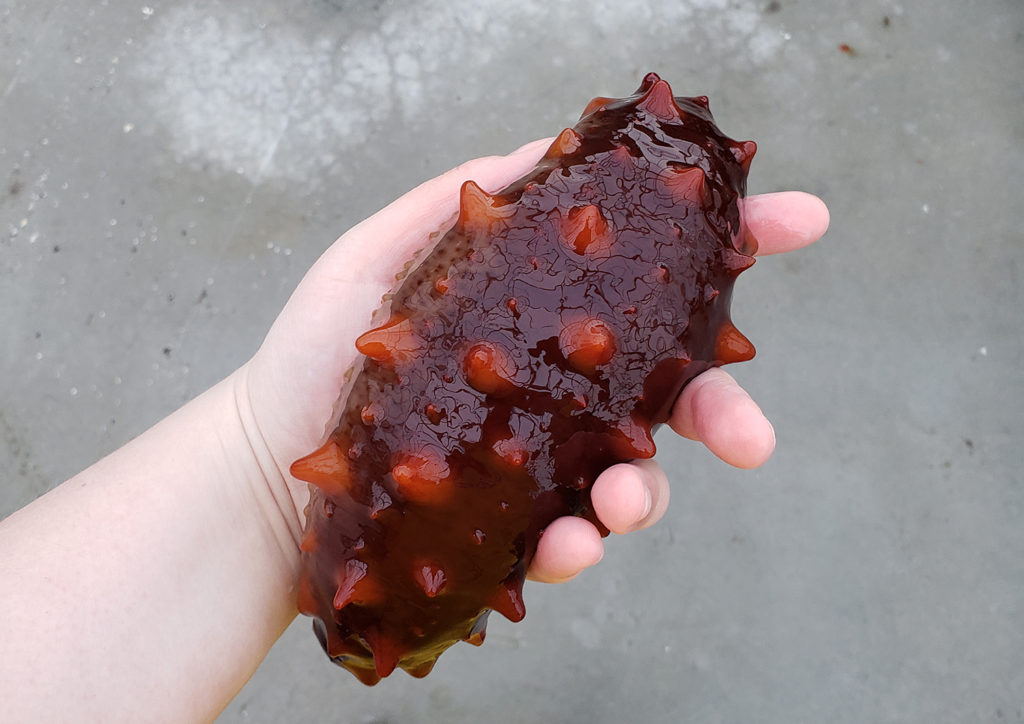
Responsibility
A fresh focus on sea cucumbers – nature’s recyclers
Researchers in Scotland, Sweden and Canada are exploring the potential of sea cucumbers, the squishy detritivores that can help clean up behind fish pens.
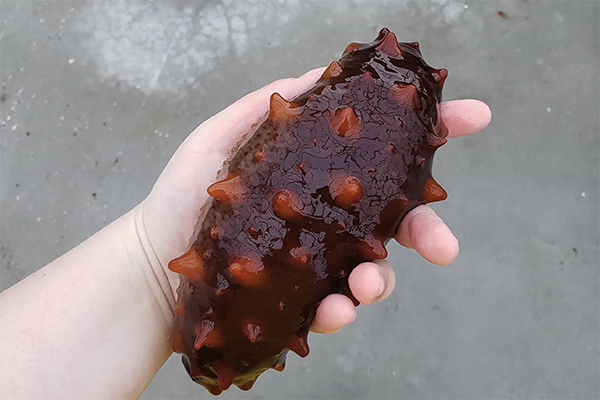
Responsibility
Cool stuff: Sea cucumbers can keep fish farms clean, research finds
University of Stirling research finds sea cucumbers can flourish by feeding on organic fish farm waste and subsequently be a high-value product.
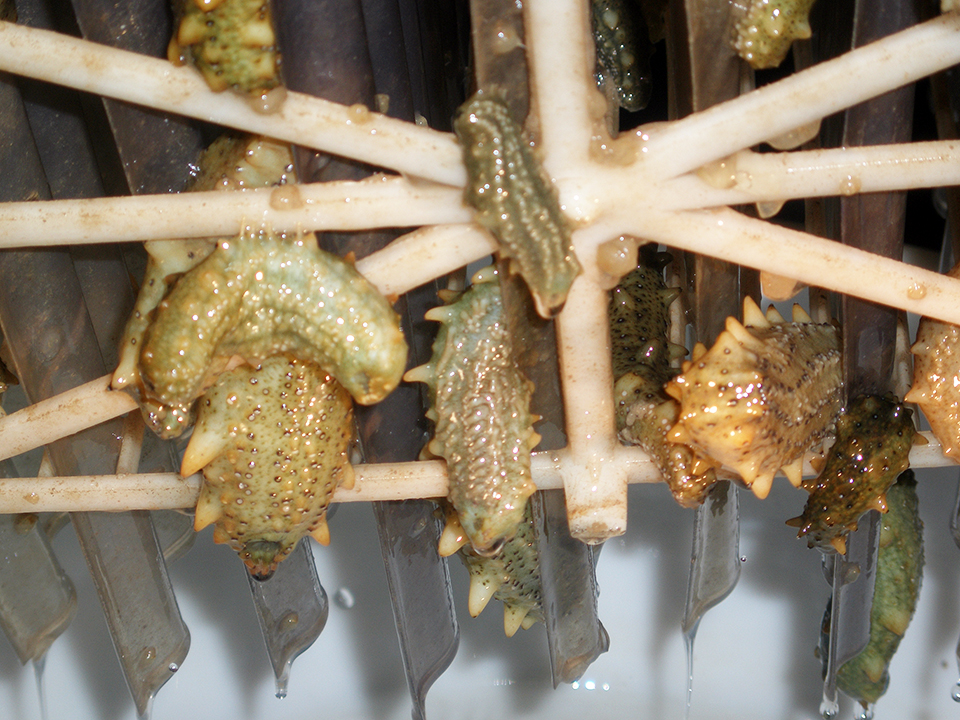
Health & Welfare
Probiotics improve nursery performance of juvenile sea cucumbers
While sea cucumbers are one of the most prized seafoods in China and Asia, their production suffers from suboptimal juvenile production. The use of proper feeds and overall management in the nursery can improve yield and survival.



